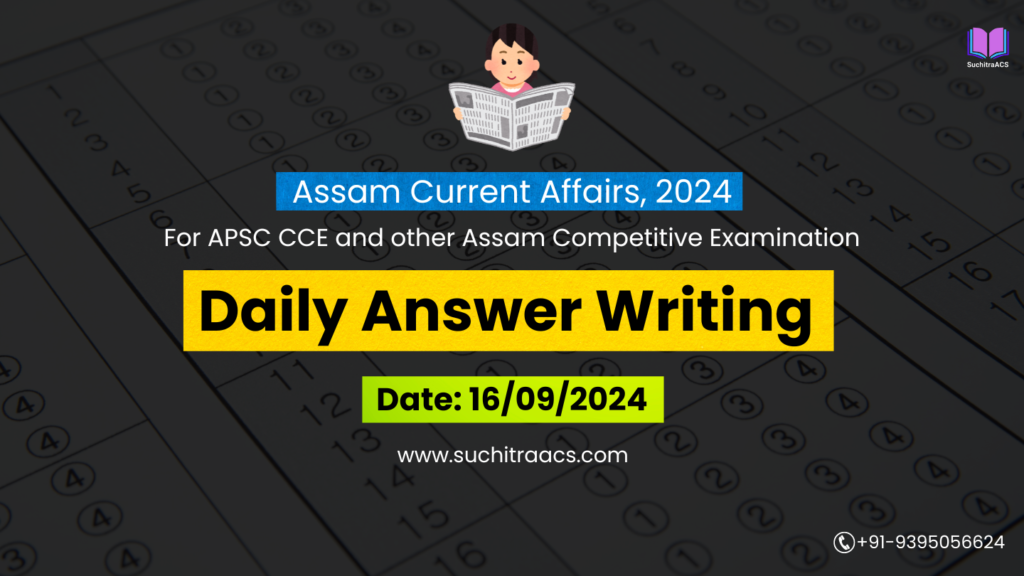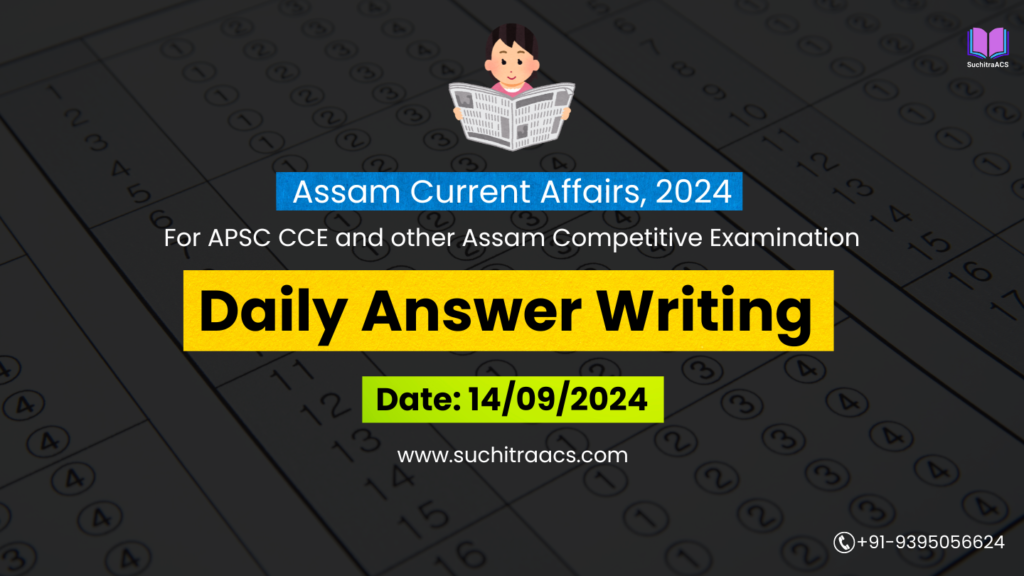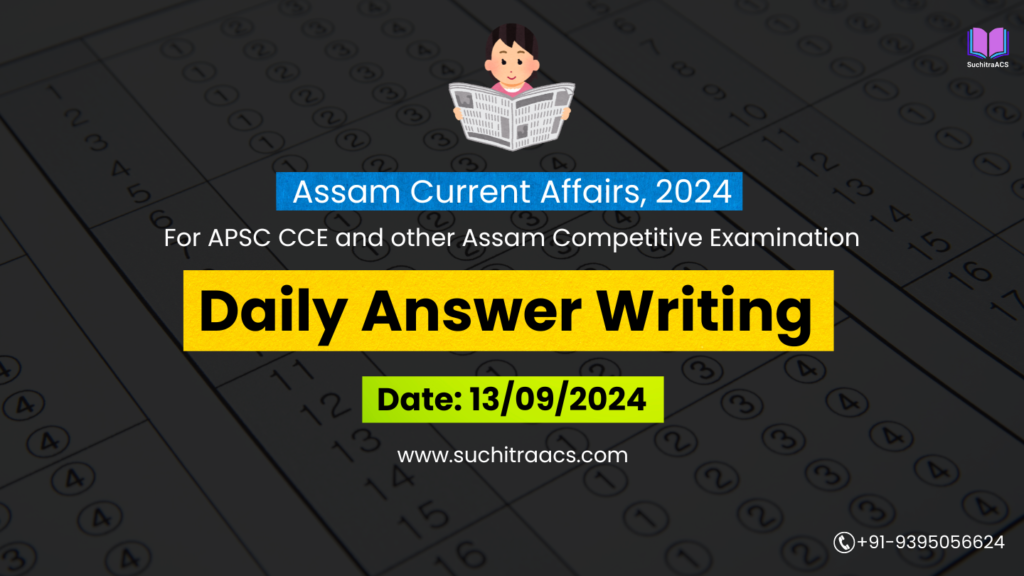APSC Answer Writing (Daily) based on Assam Tribune – 01/02/2025
For APSC CCE and other Assam Competitive examinations aspirants, practicing Daily Answer Writing is vital. This blog covers the most important Main question and its model Answer from the Assam Tribune today (01-02-2025).
Q. India aims to achieve energy security and reduce carbon emissions through its renewable energy transition. However, China’s dominance in the global renewable energy supply chain presents a major strategic challenge. Analyze the implications of this dependence and suggest measures to strengthen India’s renewable energy sector. (250 words)
Model Answer
Introduction
India’s ambitious renewable energy transition aims to achieve 500 GW of non-fossil fuel capacity by 2030 and net-zero emissions by 2070. However, China controls 80% of the global solar photovoltaic (PV) supply chain and dominates wind energy and lithium-ion battery manufacturing, creating supply chain vulnerabilities for India.
Implications of China’s Renewable Energy Dominance on India
- Supply Chain Dependency:
- Over 80% of India’s solar panels and EV batteries are imported from China.
- Disruptions in China’s supply could delay India’s renewable projects.
- Strategic and Geopolitical Risks:
- Trade restrictions and geopolitical tensions can affect India’s energy security.
- High dependence on China weakens India’s bargaining power in global trade.
- Economic Challenges:
- Domestic manufacturers struggle to compete with China’s low-cost production.
- High import bills for clean energy technology increase fiscal burden.
- Impact on India’s Green Goals:
- Dependency on imports slows down India’s transition to clean energy.
- Makes India’s Net Zero 2070 goal more challenging.
Measures to Strengthen India’s Renewable Energy Sector
- Boost Domestic Manufacturing:
- Expand the Production Linked Incentive (PLI) scheme for solar and battery production.
- Establish gigafactories for lithium-ion battery production.
- Diversify Import Sources:
- Strengthen trade partnerships with Japan, the US, and the EU for alternative technology suppliers.
- Encourage joint ventures with global energy firms.
- Invest in R&D & Innovation:
- Increase funding for next-generation solar, wind, and hydrogen technologies.
- Develop indigenous battery storage solutions to reduce dependency on lithium imports.
- Strengthen Infrastructure & Policy Support:
- Implement faster grid modernization to integrate renewables.
- Provide low-interest loans and subsidies for green energy startups.
Conclusion
Reducing dependence on China is crucial for India’s energy security, economic stability, and climate goals. By scaling up domestic manufacturing, diversifying imports, and investing in innovation, India can build a self-reliant and resilient renewable energy sector, ensuring long-term sustainability.
✨ Looking for top-quality APSC Mains Guidance with Personalised Mentor?

🔔 Join Our WhatsApp Study Group!
For exclusive access to premium quality content, including study materials, current affairs, MCQs, and model answers for APSC CCE and other Assam competitive exams.
Click here to join: SuchitraACS Study WhatsApp Group
📚 Want to know more about SuchitraACS’s most affordable courses?
Click here to know more: SuchitraACS Courses for APSC CCE and Assam Competitive Examinations




